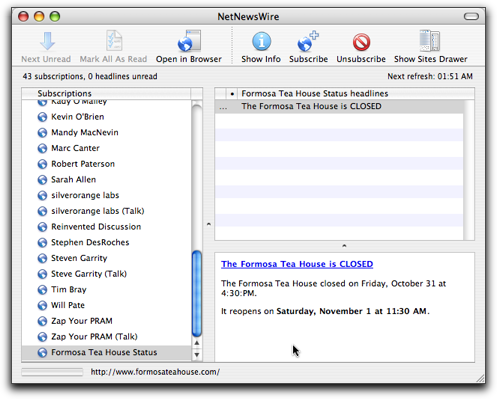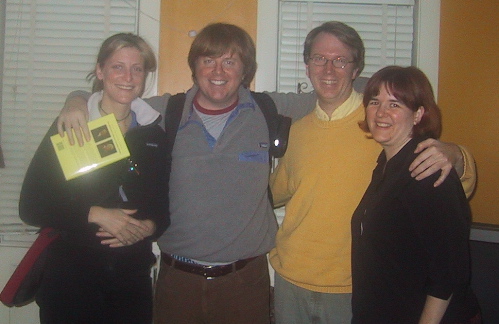A reminder that it’s Municipal Election Day on Prince Edward Island. You can find out where to vote and, after the polls close, you can follow the results online.
Here’s a line that could begin a good first novel:
I began my trip like everyone begins every trip, having their girlfriend pick them up at 5:30 in the morning.
And so begins Dan’s adventure, what we used to call, in the olden days, the “mid- to late-twenties mandatory celibacy period” back in the day.
Listening to FolkAlley.com in iTunes. Catherine calls me for an audio iChat. iTunes automatically mutes. I talk to Catherine. She signs off. iTunes automatically goes back to normal. This is what Steven is talking about.
Although it has some aesthetics challenges, this Breadalbane Community website has a very nice flavour. I especially like the section on the nature trail.
I was also intrigued to find this image which rips off a very ugly mottled green base map of Prince Edward Island that I created about 10 years ago. You can never escape your past design crimes.
To assist Will Pate in moving the Formosa Tea House RSS Feed over to its logical home on the Formosa Tea House website, I’ve put together a cleaned up and commented version of the PHP source code that generates the RSS feed.

This isn’t a profound chunk of code, but I’ve commented it liberally, so if you’re new to PHP, RSS and/or manipulating dates programatically, you might find it interesting.
You’ll need a couple of PHP classes in addition to the source here; this is all explained inside the comments.
Download the source, which is licensed under a Attribution - ShareAlike License.
If you run Virtual PC on your Mac, it’s easy to forget that you’re actually running a Windows machine, albeit in a weird, simulated way. And because Virtual PC allows you to save your virtual PC’s state, it’s easy to, in essence, never turn the PC off.
This means that it’s also easy to forget that Windows PCs accumulate internal cruft at an unusual rate, and benefit from a rebooting every once in a while. Today I realized that my virtual PC hadn’t been rebooted in about two years (two years, mind you, of occassional 5 minute usage here and there; it’s been dormant most of the time). Things were starting to get wonkly — applications not starting up, Windows Explorer behaving weirdly.
So I rebooted it.
And everything is fine now.
Moral: even simulated Windows machines need a kick every now and again.
Created at the intersection of Steven Garrity’s notions about using RSS to power our lawnmowers and the The Trojan Room Coffee Pot Camera, I’m happy to release the Is the Formosa Tea House Open or Closed? RSS Feed.

Feed this RSS goodness into your newsreader and you’ll never be without up to date information on whether the Formosa Tea House is open or closed.
I believe I have now reached the pinacle of procrastination.
If you’ve stopped using the Mac OS X “Help” feature under Jaguar or previous versions thereof, you might want to take another look under Panther: there’s a dramatic speed-up of the Help application, and it’s now very usable.
On Sunday night, after Zap and before heading home to the calm and craziness of America, Ian and Tessa came to dinner here at 100 Prince.

Catherine and I had a “we’ll just get pizza” discussion that morning while she was asleep, which she maintains we never had. As a result, Catherine whipped up one of her excellent “meals created as if from nowhere” dinners which somehow involved baklava and ice cream at the end, which seemed like a miracle to me.
At the point in the post-dinner conversation where the fiddles and guitars come out in a regular Island evening, the iBooks and PowerBooks came out instead, which felt oddly natural (something which alternately delights and frightens me).
And then they went off into the night. Lots of fun.
Notes: I use “dinner” here to mean “supper” as I’ve not lived here long enough to use “dinner” to mean “lunch.” Also, notice the unearthly glean in the photo bouncing off the back of the 2004 Edition of The Old Farmer’s Almanac; in finer stores now!
What the Formosa Tea House is selling is calm. They have the market to themselves: everyone else is selling convenience and stimulation.
 I am
I am